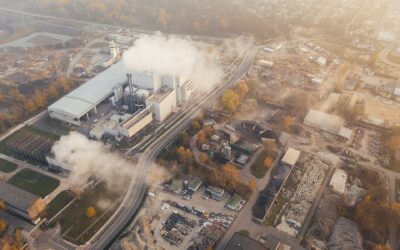The “Transition to a Post-Petroleum World” has been eyed with anticipation for decades, as evidenced from the book of the same name that was published in 1977. Nearly 50 years ago, it was already known that the energy use patterns of society were unsustainable and were thought to be nearing fundamental changes in how they operate.
But that was nearly half a century ago, and not only has our energy usage increased exponentially, our use of fossil fuels has as well. There have been many false claims of the impending doom of the oil and gas industry, each one seemingly followed by oil booms and increased production. So why would the transition away from oil and gas happen now, if it never came to fruition before? Normally, such claims of “this time it’s different” could be viewed as overly optimistic and uninformed; but this time, it really is different.
There are five main factors that are driving the current transition from fossil fuels to alternative sources of carbon-free energy: bad timing, a pandemic, government mandates, the rise of viable alternative energy, and the rise of voluntary emissions reductions. Each of these are covered below, showing how they are all coming together to finally, truthfully, move us away from oil and gas and toward a more sustainable future.
Bad Timing
The current trend in declining oil prices, amidst overall production increases, began as early as 2015. Since then, more than 200 oil and gas companies in North America alone have shut down or filed for Chapter 11 bankruptcy protection — with nearly 50 more defaulting on their debts over the past two years.
This shows that oil demand was already falling in the pre-COVID days, and it was happening for several reasons. First, the escalating trade war between China and the United States was creating an economic slowdown and, as a result, a relative overproduction of oil.
Next, a high-stakes standoff between two of the world’s leading oil producers, Saudi Arabia and Russia, sent prices through the floor, dropping as much as 60% before COVID even arrived.
Finally, U.S. oil prices dropped so low that they actually went into negative values, which was the first time in history, signaling a potential shift in how oil is fundamentally valued by society. As has always been the case with massive dips in the price of oil, though, it quickly recovered and has since stayed around the $40 mark per barrel of crude.
However, many oil and gas projects in the United States require a minimum price of at least $50 a barrel to remain feasible economically and financially. With so much already invested in further oil exploration, we are at a tipping point where these companies need to choose if they are willing to double down on the price of oil climbing back to past heights — or if they accept a transition away from current methods of production in favor of more sustainable, holistic energy production.
Unsurprisingly (or perhaps surprisingly, given the track record of the oil and gas industry consistently bouncing back from price falls), it appears most companies are electing to pursue more sustainable operations.
The COVID-19 Pandemic
The COVID-19 pandemic brought unprecedented changes to the very way of life for billions of people, and it changed the status quo in many industries and areas. Energy demand fell sharply, spurred by massive shutdowns of entire economies — and global oil demand fell in tandem.
During 2020, demand fell by more than 8.5 million barrels per day. In fact, the International Energy Agency (IEA) stated that the fall in demand during 2020 was the largest in history, further cementing the possibility that this time the transition away from oil could actually happen.
And it showed that change could indeed happen.
The worldwide reaction to COVID, from locking down entire populations to banning air travel from certain destinations, showed that we can move into uncharted territory to deal with uncharted risks. One major uncharted risk that we have been exposed to increasingly in recent years is climate change, and long before a pandemic brought oil demand way down, there was building pressure to move toward a less carbon-intensive energy future. Now, investors are seeing the value of reduced emissions in company activities, driving Environmental, Social, Governance (ESG) focus for not just the betterment of the environment but also the betterment of business.
There are other lasting effects that the pandemic will have on oil demand as well, such as remote working possibilities and reduced air travel. Working from home for a significant proportion of the population reduces fuel usage in various ways, and air travel is not expected to return to pre-pandemic levels until around 2025. In addition to working from home, tele-meeting capabilities have proven that it is not necessary to travel to meet in person.
This means that business travel will likely never return to what it once was — and with business travel being needed to subsidize passenger fares, airlines will be forced to raise passenger airfare to make up the difference, further pushing away would-be air travelers. Many airlines will either have to shut down or adopt completely different ways of doing business, which could include non-carbon-based fuel in the future.
Government Mandates
Adding to all the market-driven factors pushing the transition away from oil and gas, there are also growing government mandates that make it increasingly difficult to rely on fossil fuel energy — and increasingly more beneficial to utilize carbon-free energy. Some of these mandates include emissions targets and electrification incentives. Carbon offsets can help lower overall emissions, especially in areas that are inherently carbon-based, but they cannot be used alone. Companies must reduce emissions at the source along with offsetting.
In Europe, a $572 billion “EU Green Deal” and COVID-19 recovery package was passed, focusing on meaningful improvements in electrification (specifically electric vehicles), renewable energy, sustainable agriculture, and green hydrogen.
The Rise of Viable Alternative Energy
Emissions mandates and elective use of clean energy only work if the price of renewables and other carbon-free energy is at least competitive. This had never before been the case, with oil still being cheaper than any form of renewable energy until recently.
As technologies and efficiencies improved in wind and solar, their prices have come down immensely, with solar now cheaper than any other form of electricity in several areas of the U.S. This, combined with emissions mandates and a push to electrify everything, has resulted in alternative forms of energy being readily, commercially available for the first time since the dawn of the Industrial Revolution. Fossil fuels, though still affordable and widely used, are not the only form of applicable energy anymore.
The Rise of Voluntary Emissions Reductions
The final factor pushing the transition away from oil and gas to other forms of energy is one that is perhaps just as unforeseen as a global pandemic: people and companies voluntarily lowering their carbon emissions without being forced to do so. There are many reasons for this, some of which were created by the previous four factors (such as clean energy now being available and COVID making work-from-home possible, for example). But whatever the motivation behind it, having individuals and businesses aim to lower their carbon output is powerful — so much so that, as it grows, it could be the final push in the move away from fossil fuels toward sustainable energy usage.
What Should Oil and Gas Companies Do?
Even though clean energy is on the rise and oil appears to be on permanent decline, the use of fossil fuels still constitutes a large part of our energy mix. And even with increased uptake of renewables and other carbon-free energy, oil and gas will still be a part of the equation for years to come. So what can oil and gas companies do to not only keep their business running but also become more sustainable while doing so?
There are two main things that all oil and gas companies should ask:
- How can existing oil exploration and production emit less carbon?
- How can the business shift to still be prosperous without oil or gas as the main asset or driver?
The oil and gas industry is full of companies that are much like those in any other industry: they exist to make a profit. If the way to make a profit changes from exploiting oilfields to creating solar fields, any successful business should pivot for the good of the company, if not the good of the environment. There are no energy companies that are inextricably tied to oil and gas; if they can make money through the development of a different type of energy, why wouldn’t they?
In the end, consumers and the market in general will dictate what oil companies ultimately do. Those that adapt will survive. Those that do not will go extinct, much like the flora and fauna that comprise fossil fuels.
What Role Does Carbon Offsetting Play in This Transition?
Carbon offsets are playing a big role in the current transition from oil and gas to clean energy. In fact, they may be one of the most important transitional elements as we move away from oil and gas toward a carbon-free future.
Carbon offsetting is a great way to lower carbon emissions in ways that cannot be reduced at the source, such as those that come from companies using oil that cannot use electricity — yet. Companies can use carbon offsets to reach their emissions targets, keeping their overall carbon output low as they work to transition to reducing emissions from their operations.
It is also a great way for individuals to reduce their carbon footprints from carbon-intensive activities that they have no control over — or reducing leftover emissions from smarter choices that already emit less CO2.
Brought to you by terrapass.com
Featured image









